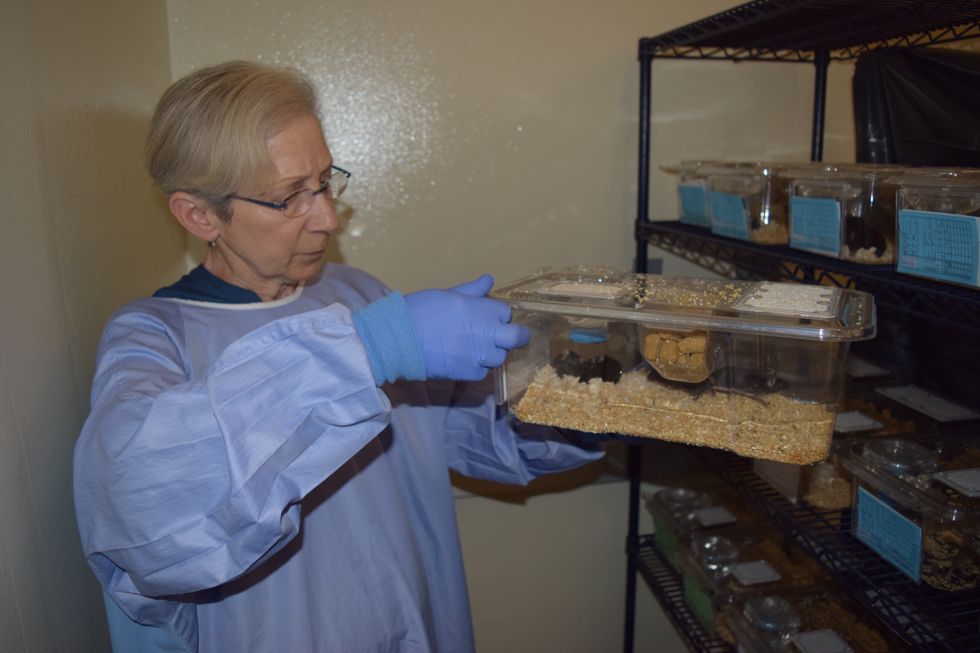Tests used by the federal government to determine how much of the chemical bisphenol A is in people's bodies have "dramatically underestimated" our exposure, according to an analysis published today.
The most common test methods for estimating people's exposure to BPA likely do not count a considerable percentage of the chemical in our bodies, researchers say. The federal government relies on those tests to conclude that current exposure levels are too low to harm our health.
That basic assumption, researchers say, is no longer valid—a dramatic conclusion with implications for hundreds of other chemicals that are tested the same way and deemed safe.
"Because negligible exposure levels have been a cornerstone of regulatory decisions, including the FDA conclusion that BPA poses little health risk, the present data raise urgent concerns that risks to human health have also been dramatically underestimated," the authors wrote in a letter published today in The Lancet Diabetes & Endocrinology journal.
Everyday we are all exposed to BPA—used in food can liners, paper receipts and plastic containers. The chemical is the most infamous of a group called endocrine disruptors, which mimic and alter hormones in the body. BPA has been linked to a range of health problems including cancer, diabetes, obesity, infertility and behavioral problems.
In examining the health risks from BPA, federal regulators and independent scientists need to know how much of it is in us. This is trickier than it seems—the body metabolizes BPA fast so they have to look for metabolites, or compounds that form after our body breaks down the parent compound.
Until the early 2000s, there were no standards for the metabolites, so scientists would use an enzyme solution to turn the metabolites back into the original BPA compound and then measure that, a process known as "indirect testing." However, scientists can now measure the metabolites directly, and they're finding that such direct measurements are much more accurate and show a lot more BPA in urine when compared to indirect testing.
The problem is that indirect testing remains the "gold standard" for assessing exposure levels for regulators worldwide, including the United States and the European Union.
"This would indicate the old method is highly inaccurate," Pat Hunt, co-author of the new analysis and researcher at Washington State University, told EHN, referencing the U.S. Food and Drug Administration. "It's a case of having better tools in our hands. Tools we were using were cruder and highly inaccurate."
This testing discrepancy is important because the FDA still uses the indirect method of converting metabolites back to BPA via an enzyme and—against the advice of independent scientists like Hunt—has deemed BPA safe at the levels we're currently exposed to. And part of the reason the FDA maintains the chemical's safety is that the agency asserts human exposure to BPA is "negligible."
Laura Vandenberg, an environmental health researcher at the University of Massachusetts-Amherst's School of Public Health and who was not involved in the new analysis, said it's probably not some "nefarious reason" the FDA continues to use the old standard.
"If you think a method works, why create a new method?" she told EHN, adding that the cost of adding in additional standards could be another factor.
However, the new analysis has implications way beyond BPA, she said. Hundreds of other endocrine disrupting compounds—including phthalates in plastic food containers and personal care products; per- and polyfluoroalkyl substances (PFAS) added to nonstick cookware and other goods to repel oil and water; flame retardants; and other bisphenols such as BPS and BPZ—are currently tested via the same indirect method by the FDA.
"One of the major questions this study raises is how pervasive is this problem?" Hunt asked.
Latest concern on federal testing

Researcher Pat Hunt with lab mice. (Credit: Lynne Peeples)
EHN last month published a year-long investigation of the U.S. Food and Drug Administration's handling of BPA science. It found a "willing blindness" to modern science techniques on endocrine disrupting compounds, concluding U.S. regulators may be operating at the fringes of scientific integrity, possibly with the intent to keep the current testing and regulatory regime intact and to avoid scrutiny.
The investigation, using hundreds of emails obtained via the Freedom of Information Act and dozens of interviews, showed:
- FDA and industry scientists continue to use decades-old study methods that fail to detect effects known to be associated with BPA exposure;
- Emails between federal employees suggest an effort to ignore evidence of harm;
- Biased data interpretation methods by the FDA;
- Sharp disagreement between the FDA regulators and health officials at the National Institutes of Health on the safety of BPA and what messages are relayed to the public.
The investigation focused on a multimillion-dollar project co-led by the FDA, called the Consortium Linking Academic and Regulatory Insights on BPA Toxicity, or CLARITY. The effort, launched in 2012, combines a traditional regulatory toxicology study from the government with studies from academic scientists.
Our reporting found sharp disagreement on study methods and data interpretation between the two camps and what was touted as a way to get on the same page has seemingly further cemented the scientific impasse over the controversial chemical.
Today's analysis bolsters the academics' argument that the FDA's tests are inadequate. In the CLARITY study, the FDA's own data showed evidence that there were impacts on rats at the lowest dose examined. However, the authors wrote in the new analysis, "based on the assumption that human exposure to BPA is negligible, the FDA has not taken into account the adverse low dose effects in CLARITY data and many other studies."
The FDA did not return our requests for comment on the new analysis.
Tests yield wide disparity
The new analysis found wide gaps in BPA exposure levels when comparing the direct testing versus the old method. For example, the researchers compared the urine of 29 pregnant women in their second trimester using both methods. Using the direct testing, they found the average level of BPA was 44 times higher than the average for adults in the latest National Health and Nutrition Examination Survey. When they used the old, indirect method of testing, the average BPA level was 19 times lower than the direct test. "Importantly, disparity between indirect and direct results increased substantially as exposure increased," the authors wrote.
The indirect tests have provided the "bulk of data on human BPA levels," the authors added. So, the new analysis puts a question mark on a large chunk of the data that has been used to tell us we're safe from a chemical that is pervasive in our lives, our bodies, and the bodies of our developing children.
Vandenberg said chemicals in the U.S. undergo three major steps in testing: a hazard assessment to see at what levels it causes health impacts; an assessment to see how much of the chemical is in food and products and how much we're exposed to; and then a lab assessment—based on people's exposures—to again check for health effects.
"If exposure assessment say people are exposed to piddly amounts and they're not" it throws off the entire assessment, she said.
Hunt said this highlights the "need for standards to measure [metabolites] directly. We always have standards for parent compounds, but having standards for metabolites is key to measuring them as accurately as possible."
"Like everything else, science moves forward, and the new direct method is the best method available," Hunt said. "There's an urgent need to go back and reanalyze the data from [previous national surveys] or conduct new studies to see how highly exposed humans are."
- Researchers gave people BPA — and saw a link to type 2 diabetes ... ›
- Exposed: Toward a BPA-free Future - EHN ›
- Exposed: Federal gov'ts 'willful blindness' on BPA exposure - EHN ›
- Exposed: Deciphering the real message about BPA - EHN ›
- BPA Pollution: What you need to know - EHN ›
- The toxic chemical limbo game - EHN ›


























